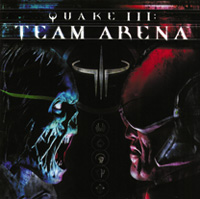 Vigilante 8: Second Offense
Vigilante 8: Second Offense
(Activision for the Playstation)
by Eric Johnson
More mid-’70s vehicular destruction for those of us not brave enough to weld a flamethrower onto the hood of an El Camino and speed into the side of a garbage truck. Sequels are a tricky business, fortunately for our friends at Luxoflux, video game sequels have a much better track record than motion pictures, novels, and presidential terms. When you have an excellent and successful title on your hands, there are generally two ways to approach the second installment – opt for the complete overhaul (laying the ground for a high concept trilogy), or stick to the same formula, iron out the rough spots, increase the difficulty, and stuff it full of new features. The makers of Vigilante 8: Second Offense went for the latter and the resulting experience, while not terribly original, is an excellent game.
2017, former Vigilante-turned-diabolical-Coyote-leader Slick Clyde is growing old, the United States is all that stands between him and world domination; so he gets some Cyborg henchmen together, travels back in time to 1977 in an attempt to wipe out his former allies. The plot is fairly irrelevant because auto-combat is all about five cars in an enclosed area decked out with rocket launchers trying to blow each other up. In that respect, the game has barely changed, and that’s a good thing because Vigilante 8 was an outstandingly good time. Improvements can be accounted for in numbers, there are now eighteen vehicles to chose from, nine of which are available from the beginning. Thankfully, most of the vehicles are still classic ’70s models, the futuristic cars being relatively few and well-designed. All of the cars and special weapons are new and very cool, a Mustang, an El Camino, a Winabego, a Delorean, a stretch limo, and a tow truck are available for use. In my opinion, the vehicles are far better balanced than they were in the original, and the extra designs are a welcome addition. The balance between vehicles can be improved by upgrade tokens – large yellow disks that improve durability, speed, and acceleration appear upon the destruction of an opponent. Collecting enough upgrades gives access to an improved chassis for each car, increasing the long-term entertainment value of the game.
Another drastic improvement over the original can be found in the extended quest mode available for each character. The exceptionally short single-player quests, which seriously limited the replay value of the original, have now been doubled in length and the mission objectives extended. Good guys have to protect something, bad guys have to destroy something, and the neutral weirdos have some seriously bizarre objectives, including bobsled races and live Alligator capture. In addition, there are explosives, money, or extra fuel that must be collected in order to complete each mission; I’m not a big fan of this feature as it can be exceptionally frustrating without adding anything special to the entertainment value of the game. The levels these battles take place in are very large, with enough room for the fast vehicles to open up, but small enough to ensure there’s nowhere to hide. Environments include a nuclear power plant, a steel mill, a ski resort, and an oil refinery – some are quite good, but I’m a bit disappointed overall as I preferred the realistic “stretch of highway” feel of the levels found in the original.
Overall, these new features add up to a tremendous amount of playtime. To complete all the quests, unlock the extra characters, and see the upgraded vehicles requires about twenty hours of intense action; and that’s before you even take into account the multi-player mode with all its extra features. I suggest taking your time with this one, limit yourself to an hour at a time. This game will make you feel chewed up and spit out if you play it for too long.



